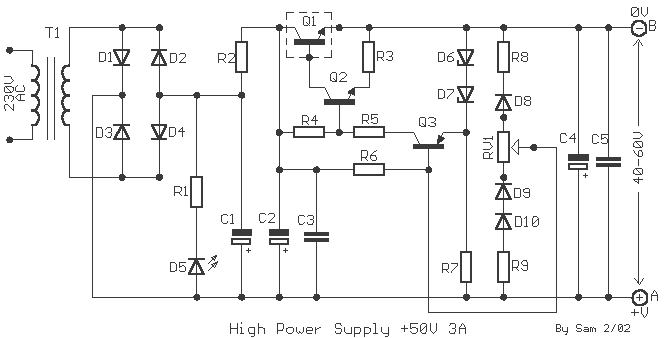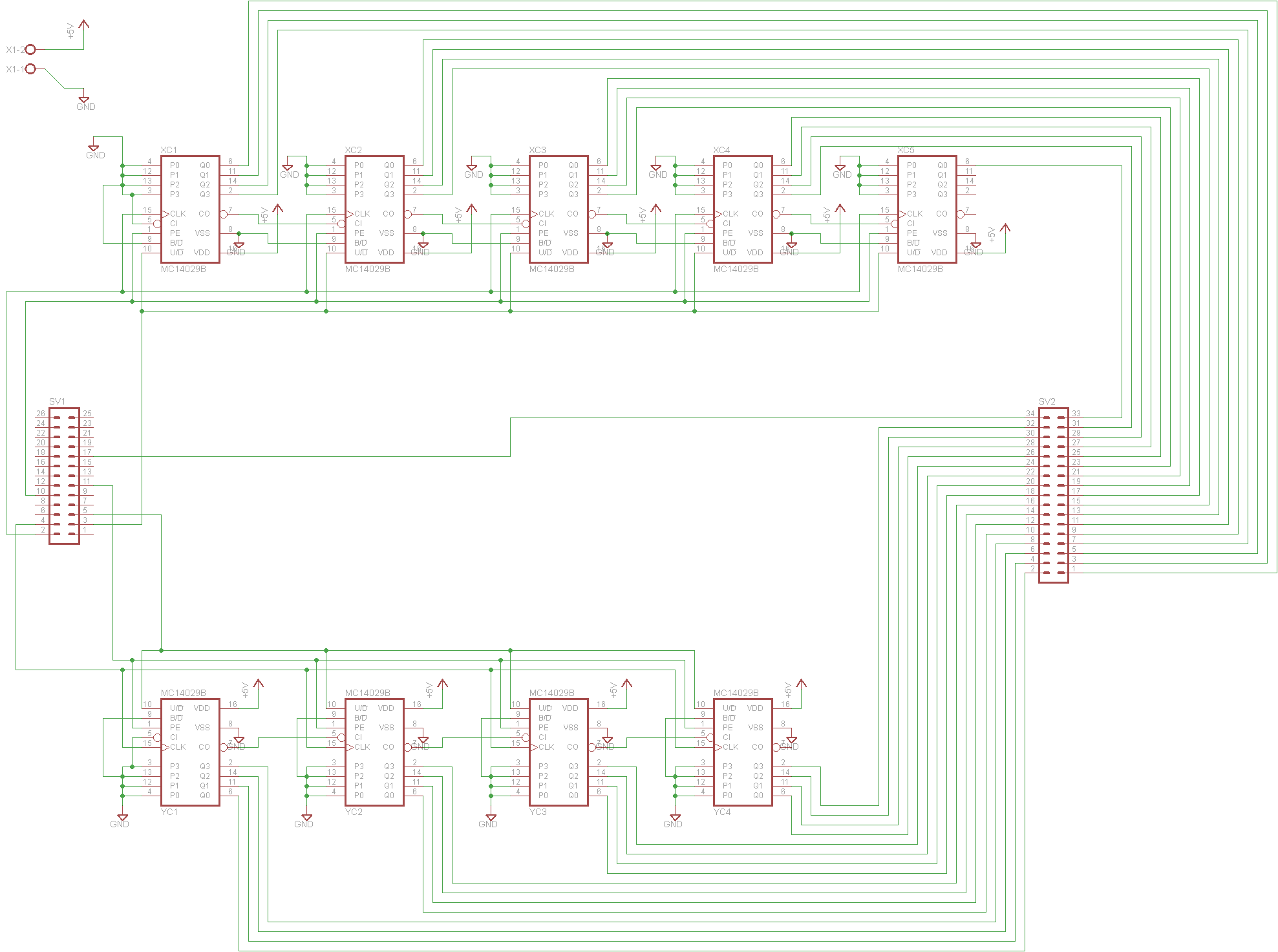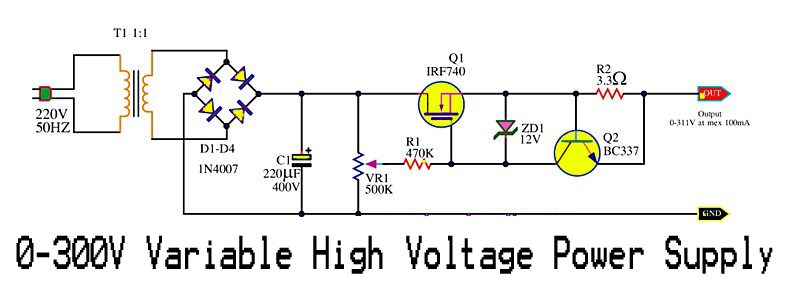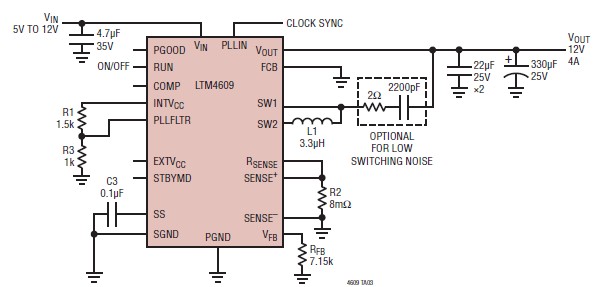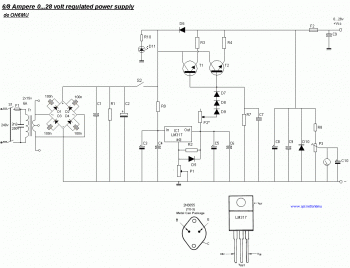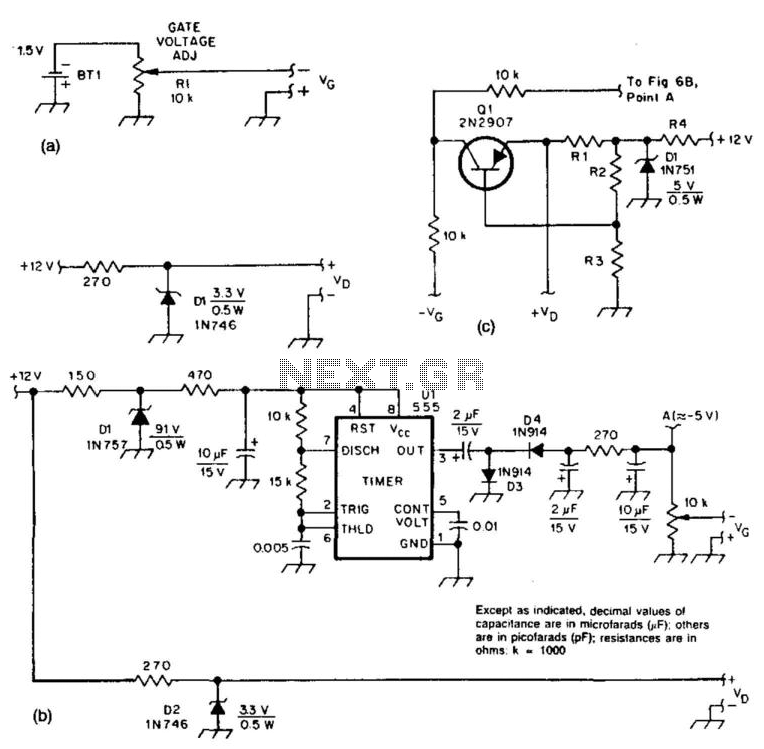
HELIUM NEON LASER SUPPLY
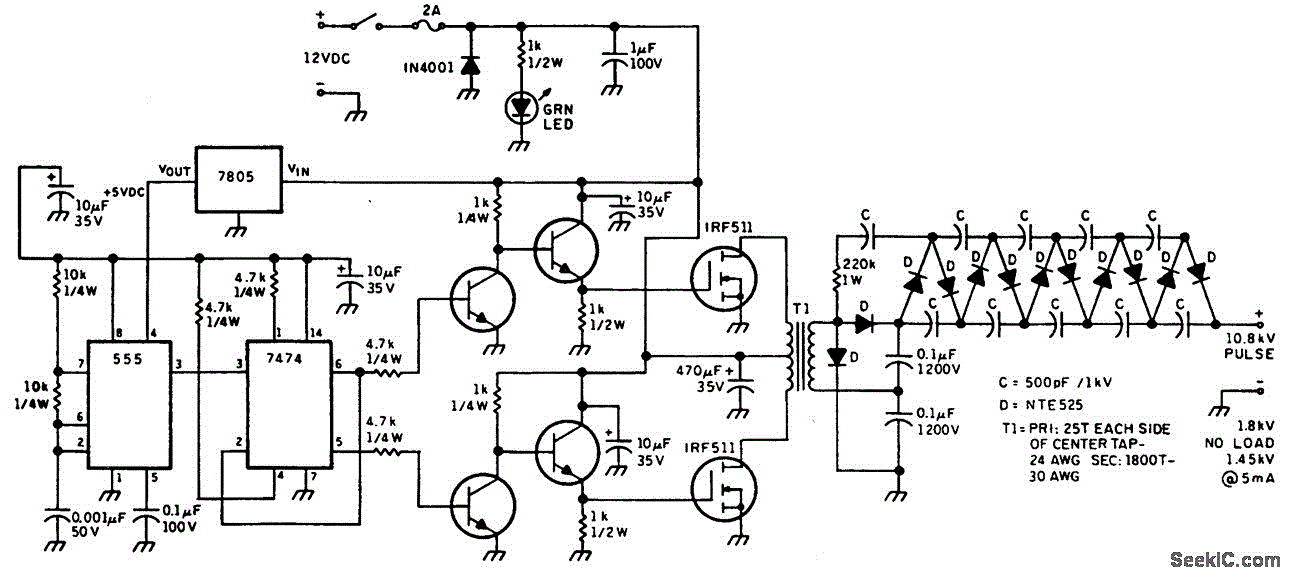
This figure illustrates a method for generating a momentary 10-kV voltage pulse to initiate plasma discharge across a laser tube. A diode voltage-multiplier circuit is connected in series with the main supply, obtaining its input power from one of the voltage-multiplier diodes in the main supply. The voltage across this diode is typically 1.
The described circuit operates on the principle of voltage multiplication using diodes and capacitors arranged in a specific configuration. The diode voltage-multiplier circuit typically consists of a series of diodes and capacitors that work together to step up the voltage. When an AC voltage is applied to the input of the circuit, the diodes conduct during the positive half-cycle, charging the capacitors. During the negative half-cycle, the diodes prevent the capacitors from discharging back into the supply, effectively stacking the voltage across the capacitors.
In this particular application, the circuit is designed to produce a high-voltage pulse necessary for initiating the plasma discharge. The momentary 10-kV pulse is crucial for creating the conditions required for ionization within the laser tube, allowing for the generation of laser light. The choice of a 10-kV output indicates that the circuit must be capable of handling high-voltage operations safely and effectively.
The design considerations for such a circuit include ensuring that the diodes used can withstand the high reverse voltage and that the capacitors have appropriate voltage ratings to prevent breakdown. Additionally, the circuit layout must minimize parasitic capacitance and inductance to ensure that the pulse is sharp and well-defined, which is critical for effective plasma initiation.
Safety measures must also be implemented due to the high voltages involved, including proper insulation, clear labeling, and the use of protective components to prevent accidental discharge. Overall, the diode voltage-multiplier circuit is an essential component in generating the necessary voltage for plasma discharge in laser applications.This figure illustrates a way in which a momentary 10-kV voltage pulse can be generated to initiate the plasma discharge across the laser tube. A Diode voltage-multiplier circuit is connected in series with the main supply and obtains its input power across one of the voltage-multiplier diodes in the main supply.
The voltage across this diode is typically 1.. 🔗 External reference
The described circuit operates on the principle of voltage multiplication using diodes and capacitors arranged in a specific configuration. The diode voltage-multiplier circuit typically consists of a series of diodes and capacitors that work together to step up the voltage. When an AC voltage is applied to the input of the circuit, the diodes conduct during the positive half-cycle, charging the capacitors. During the negative half-cycle, the diodes prevent the capacitors from discharging back into the supply, effectively stacking the voltage across the capacitors.
In this particular application, the circuit is designed to produce a high-voltage pulse necessary for initiating the plasma discharge. The momentary 10-kV pulse is crucial for creating the conditions required for ionization within the laser tube, allowing for the generation of laser light. The choice of a 10-kV output indicates that the circuit must be capable of handling high-voltage operations safely and effectively.
The design considerations for such a circuit include ensuring that the diodes used can withstand the high reverse voltage and that the capacitors have appropriate voltage ratings to prevent breakdown. Additionally, the circuit layout must minimize parasitic capacitance and inductance to ensure that the pulse is sharp and well-defined, which is critical for effective plasma initiation.
Safety measures must also be implemented due to the high voltages involved, including proper insulation, clear labeling, and the use of protective components to prevent accidental discharge. Overall, the diode voltage-multiplier circuit is an essential component in generating the necessary voltage for plasma discharge in laser applications.This figure illustrates a way in which a momentary 10-kV voltage pulse can be generated to initiate the plasma discharge across the laser tube. A Diode voltage-multiplier circuit is connected in series with the main supply and obtains its input power across one of the voltage-multiplier diodes in the main supply.
The voltage across this diode is typically 1.. 🔗 External reference
